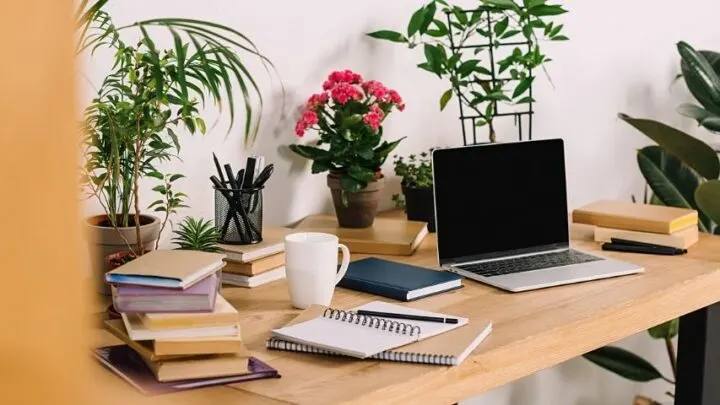You are reading this article because you are interested in the Best Plants for an Office with no windows.
Has your office ever felt stuffy? Do you need to brighten the area with a plant or probably build a window?
Well, there is an alternative to adding some vibrancy and ‘life’ to an otherwise dull environment. Office Plants!
Fortunately, some extraordinary creations of nature improve air quality in low-light conditions.
Here is my list of 30 plants you can add to your office décor.
30 Plants for an Office with No Windows
- Bromeliad Guzmanias
- Cactus
- Cast Iron Plant
- Chinese Evergreen
- Creeping Fig
- Dracaena
- Ficus
- Lucky Bamboo
- Money Tree Plant
- Parlor Palm
- Philodendron
- Sanseveria
- Sempervivum
- Spider Plant
- ZZ Plant
- Peace Lilly
- Peacock Plant
- Peperomia
- Spider Plant
- Prayer Plant
- Cactus
- Bird’s Nest Fern
- Lady’s palm
- Air Plant
- English Ivy
- Cacti
- Peacock plant
- Pothos
- Aloe Vera
- Scindapsus Pictus
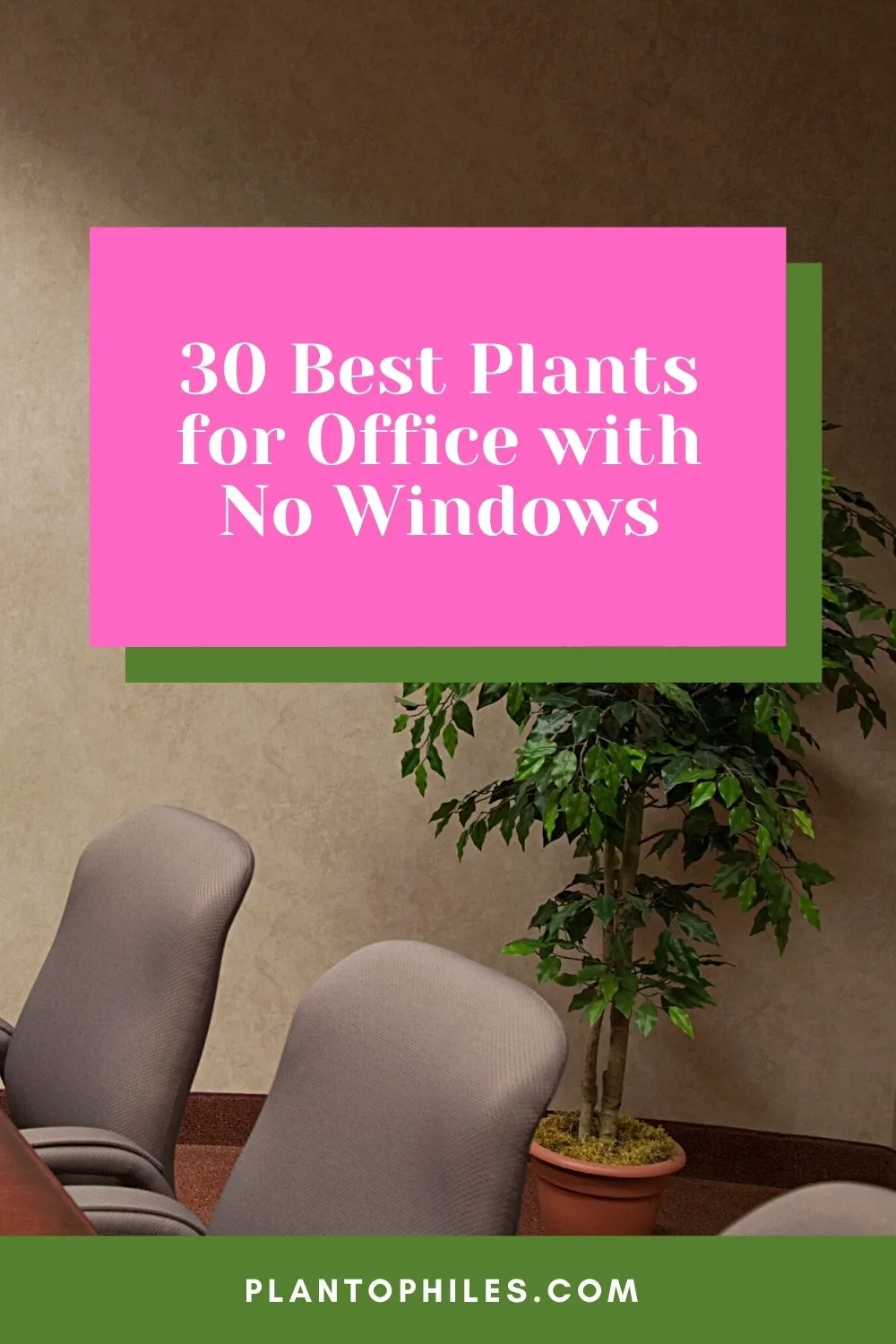
30 Best Plants for an Office with No windows
1. Bromeliad Guzmanias
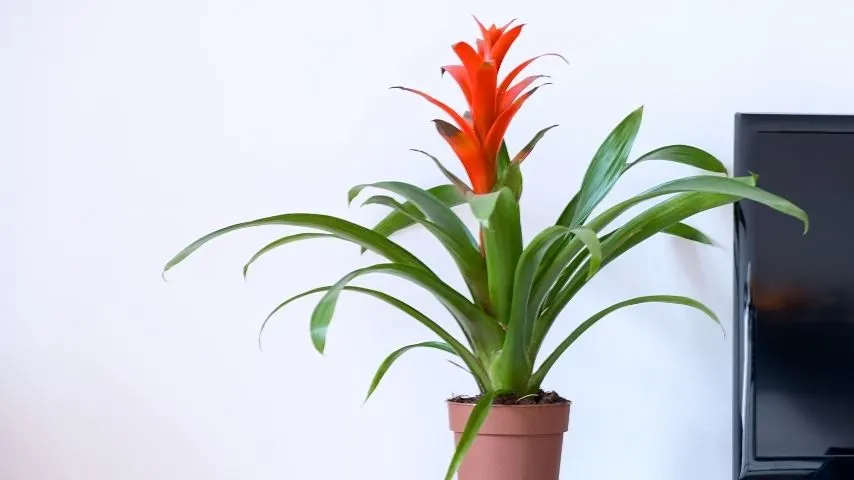
Gorgeous! This is one word that you’ll think of the moment you lay eyes on this vibrant plant.
One would imagine this is high maintenance, bright sunlight needing plant that needs extreme care. The reality is quite the opposite.
Varieties of Bromeliad Guzmanias can grow easily in shady low-light areas such as offices.
Its binomial nomenclature and basic plant care requirements include:
- Scientific Name: Guzmania
- Family: Bromeliads
- Temperature: 70 to 90 degrees Fahrenheit (21.11-to-32.22 degrees Celsius)
- Fertilizer: diluted half strength low-nitrogen fertilizer
- pH: 4 to 7
- Soil: sand and peat-based soil works the best for bromeliads
- Lighting: grows best in low lighting and shades
- Growth rate: extremely slow growth rate
- Humidity: 40-60% humidity is recommended
2. Cactus
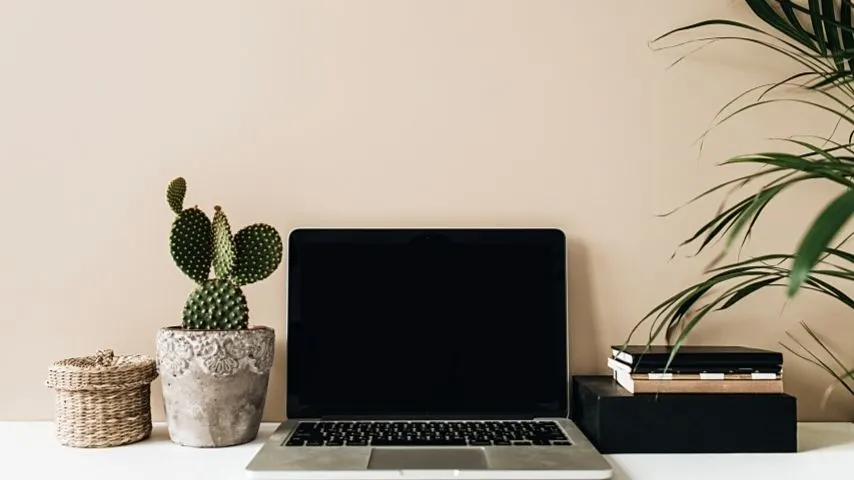
There is no denying the beauty of a cactus plant. But since this grows in the desert under the sun’s bright light, you may feel a little disappointed.
Don’t lose heart just yet! Several cactus variations thrive in low-light situations.
Cacti varieties such as scarlet ball cacti, crown cacti, zebra cacti, and Christmas cactus grow quite well in office environments, especially if you have no windows.
Its binomial nomenclature and basic plant care requirements include:
- Scientific Name: Cactaceae
- Family: Cactaceae, Juss
- Temperature: 65 to 85 degrees Fahrenheit (18.33-to-29.44 degrees Celsius)
- Fertilizer: diluted half strength house plant food
- pH: 5.5 to 6.5
- Soil: peat moss, grit/sand, and some soil
- Lighting: indoor lighting works for this cactus
- Growth rate: slow and rare growth rate
- Humidity: 40-60% humidity is recommended
3. Cast Iron Plant
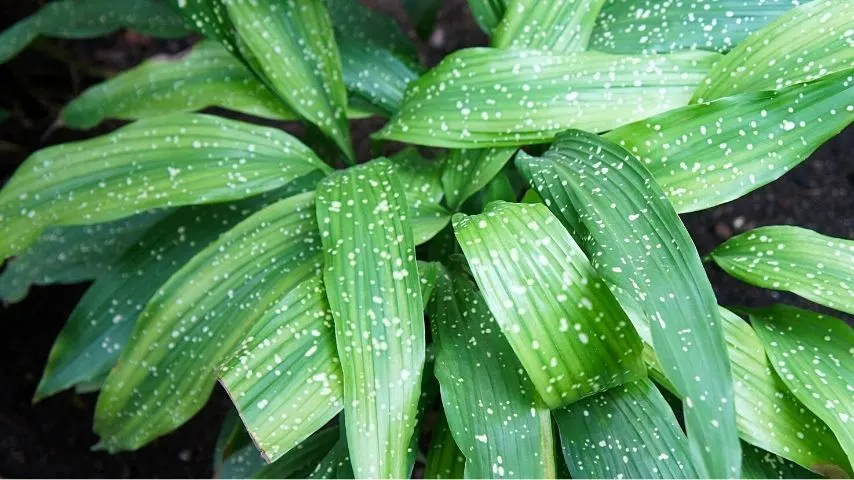
The Cast Iron Plant is one indestructible houseplant and, therefore, ideal for an office with little to no prominent source of sunlight.
In fact, exposing this plant to direct sunlight damages the foliage of this lush plant. If kept in direct sunlight, the leaves lose color and appear bleached.
Indoors is where this plant thrives, and it might make an attractive addition to your work desk!
Its binomial nomenclature and basic plant care requirements include:
- Scientific Name: Aspidistra Elatior
- Family: Asparagus
- Temperature: 60 to 75ᵒ F (15.56-to-23.888 degrees Celsius)
- Fertilizer: all-purpose (preferably liquid) fertilizer
- pH: 5.5 to 6.5
- Soil: organic matter-based soil
- Lighting: survives in no to minimal light
- Growth rate: moderate growth rate
- Humidity: 60-70% humidity is recommended
4. Chinese Evergreen
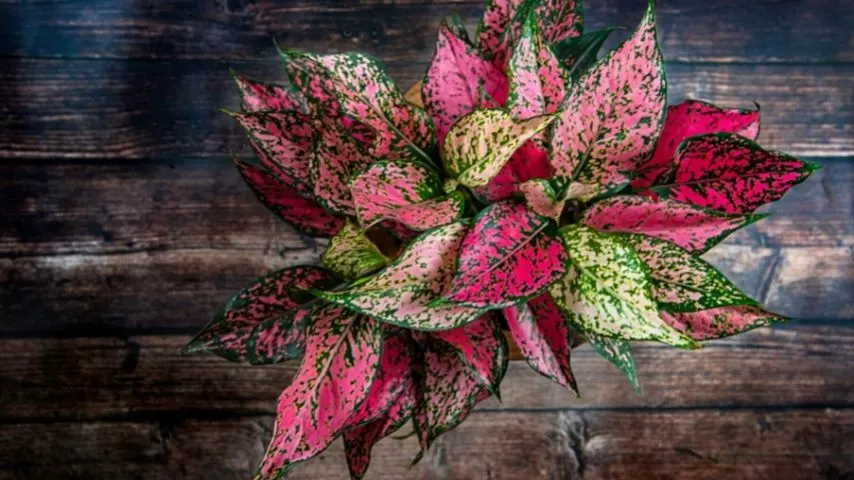
This gorgeous Chinese Evergreen requires little to no effort to keep it lush. For an office with no windows, this is the ideal plant.
If you aren’t sure which plants to pot indoors, this is one plant that should be on your list.
Its binomial nomenclature and basic plant care requirements include:
- Scientific Name: Aglaonema
- Family: Arums
- Temperature: 68 to 77ᵒ F (20-to-22 degrees Celsius)
- Fertilizer: balanced liquid fertilizer
- pH: 5.5 to 6.5
- Soil: perlite and peat-based soil
- Lighting: poor/indoor lighting
- Growth rate: This is a slow-growing plant
- Humidity: 60-70% humidity is recommended
5. Creeping Fig
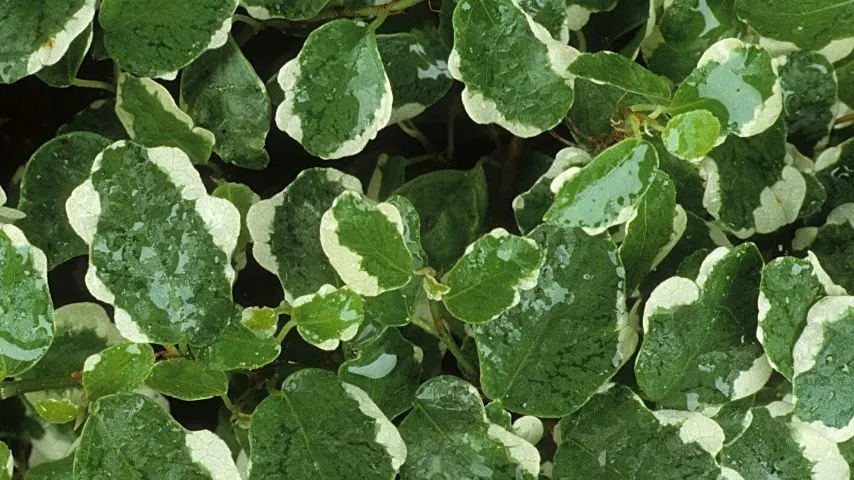
This exceptionally sturdy plant will not die on you just because you are a novice planter who just wants to add some color to the minimal décor of your working space.
This vine-like plant can be hung in beautiful planters to add a touch of vibrancy to an otherwise dull place.
Its binomial nomenclature and basic plant care requirements include:
- Scientific Name: Ficus Pumila
- Family: Mulberry Family
- Temperature: 65 to 85ᵒ F (18.33-to-29.44 degrees Celsius)
- Fertilizer: diluted half strength house plant food
- pH: 5.5 to 6.5
- Soil: peat-based organic soil
- Lighting: indoor or indirect sunlight
- Growth rate: moderate growth rate
- Humidity: 50-60% humidity is recommended
6. Dracaena

Dracaena is another low-light plant. This attractive piece of foliage is quite right for an office space.
Depending on the specie, this plant can grow tree-like and be placed in larger pots as corner pieces. The appearance and texture of the leaves depend on the type of dracaena you choose.
Its binomial nomenclature and basic plant care requirements include:
- Scientific Name: Dracaena
- Family: Asparagus
- Temperature: 60 to 70ᵒ F (15-to-21 degrees Celsius)
- Fertilizer: a water-soluble variety of fertilizer
- pH: 6 to 6.5
- Soil: well-draining, chunky soil
- Lighting: moderate to low lighting
- Growth rate: slow growth rate
- Humidity: 60-80% humidity is recommended
7. Ficus Lyrata
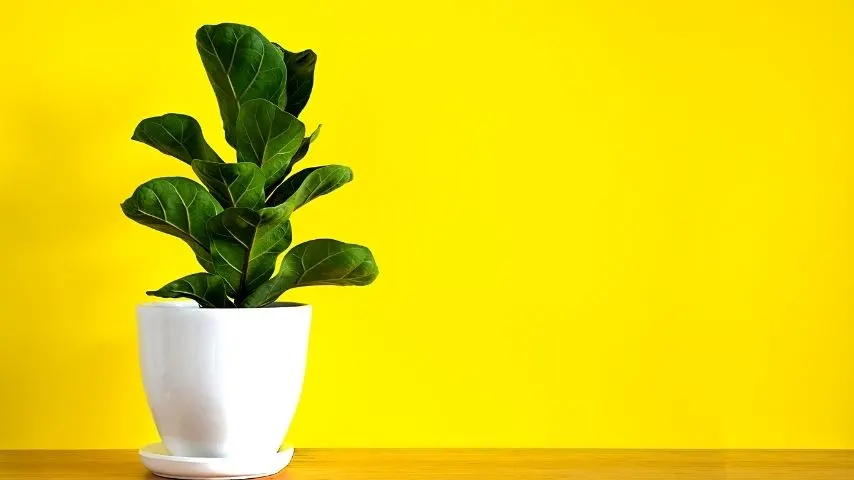
This is a standard indoor plant. It tolerates low light situations quite well, given that you maintain the plant properly.
One of the many steps in maintaining this plant is to clean the leaves regularly. If the indoor air is dry and warm, you might have to mist the plant frequently.
Its binomial nomenclature and basic plant care requirements include:
- Scientific Name: Ficus bejamina
- Family: Ficaceae
- Temperature: 60 to 70ᵒ F (15.55-to-21.11 degrees Celsius)
- Fertilizer: nitrogen-rich fertilizer
- pH: 5.5 to 6.5
- Soil: fertile and well-draining soil
- Lighting: indoor lighting or indirect sunlight
- Growth rate: relatively slow growth rate
- Humidity: 40-65% humidity is recommended
8. Lucky Bamboo
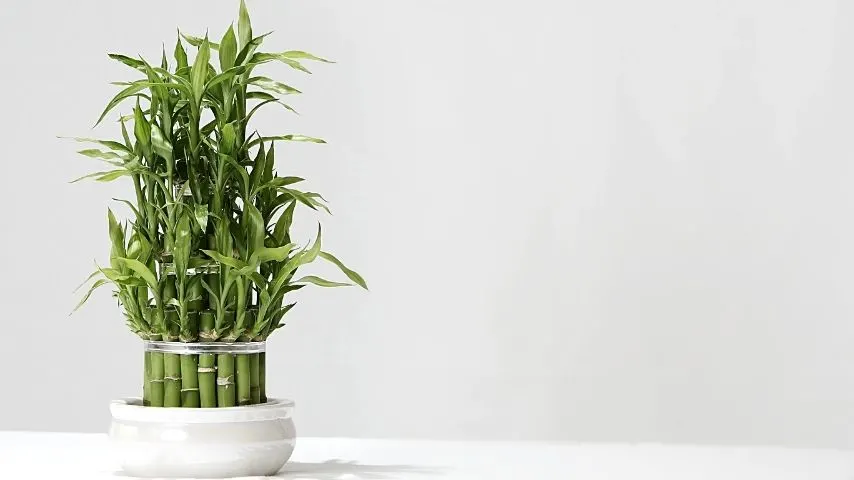
The Lucky Bamboo you should get just for the mere beauty of it. These eye-catching plants are perfect for an office desk, the lobby, and any empty shelves you may have.
The stems are styled so well that they add their own twist of décor to the space.
Its binomial nomenclature and basic plant care requirements include:
- Scientific Name: dracaena Sanderiana
- Family: Asparagus family
- Temperature: 65 to 95ᵒ F (18-to-35 degrees Celsius)
- Fertilizer: diluted half strength house plant food
- pH: 6 to 6.5
- Soil: moist and well-draining soil
- Lighting: low/indoor lighting
- Growth rate: moderate growth rate
- Humidity: 50-70% humidity is recommended
9. Money Tree Plant
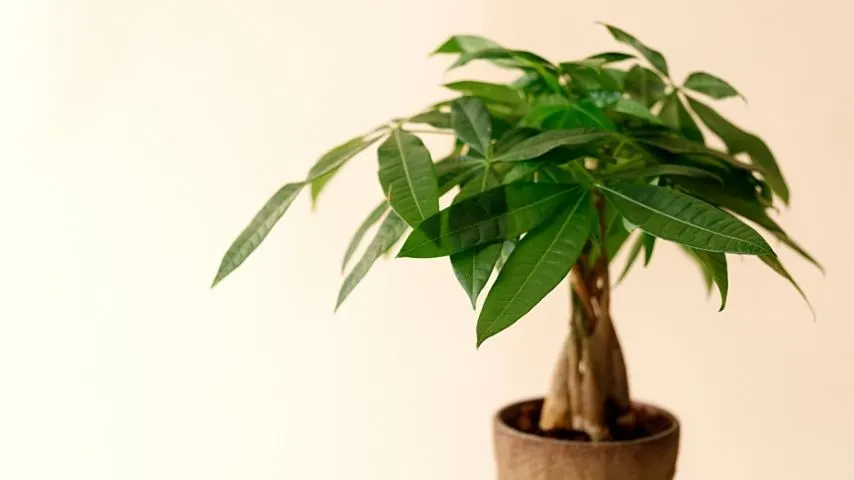
This lush green foliage is the ideal statement plant for any workspace. This is an east Asian plant that thrives indoors.
The interesting patterns on its leaves make it the perfect addition to any dull space. If you are choosing this plant for your offices, this is what you need to know.
Its binomial nomenclature and basic plant care requirements include:
- Scientific Name: Pachira Aquatica
- Family: Mallows
- Temperature: 65 to 80ᵒ F (18.33-to-26.66 degrees Celsius)
- Fertilizer: diluted half-strength water-soluble fertilizer
- pH: 6 to 7.5
- Soil: potting mix with loamy, well-draining soil
- Lighting: indoor lighting works for this plant
- Growth rate: moderate growth rate
- Humidity: 50-70% humidity is recommended
10. Parlor Palm
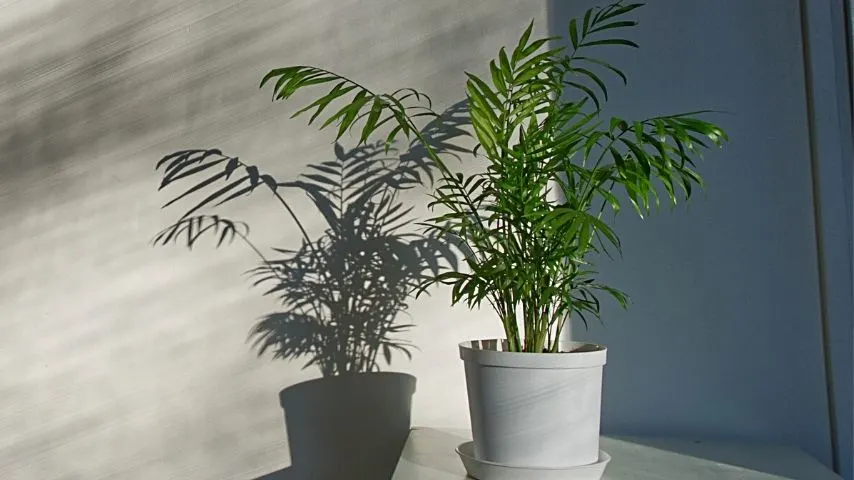
This gorgeous indoor palm is well-loved in homes across the United States. The deep green foliage adds a striking appeal to an otherwise lifeless room.
If your office is without a window, this plant can brighten up the place completely. This is a low-maintenance plant despite its lush green appearance.
Its binomial nomenclature and basic plant care requirements include:
- Scientific Name: Chamaedorea Elegans
- Family: Arecaceae
- Temperature: 65 to 80ᵒ F (18.33-to-26.66 degrees Celsius)
- Fertilizer: high nitrogen (slow release)
- pH: 5 to 7.5
- Soil: peaty potting mix (soil-based)
- Lighting: indirect light works, but no natural lighting is also suitable
- Growth rate: slow growth rate
- Humidity: 70-80% humidity is recommended
11. Philodendron
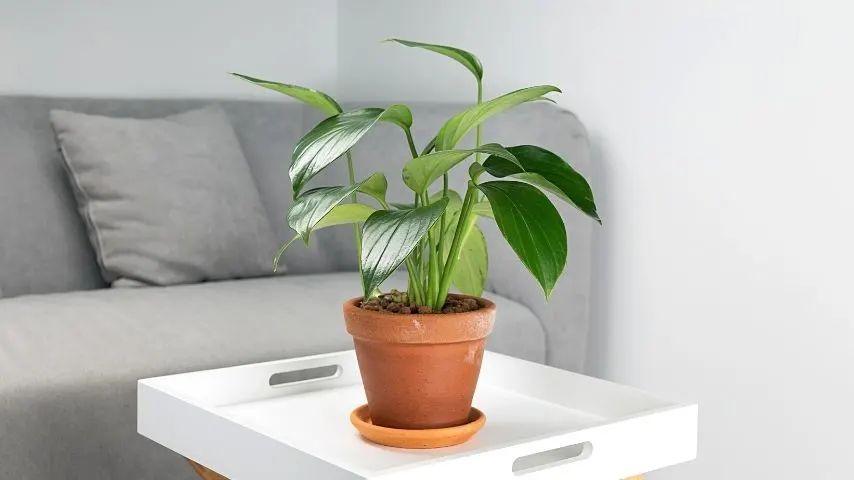
A philodendron is the easiest plant to grow. Maintaining plants in an office environment isn’t as easy as taking care of house plants.
It is an easy-to-nurture plant if you plan to grow it in your office.
Its binomial nomenclature and basic plant care requirements include:
- Scientific Name: philodendron
- Family: arums
- Temperature: 70 to 80ᵒ F (21-to-26 degrees Celsius)
- Fertilizer: nitrogen, phosphorus, and potassium-based fertilizer
- pH: 5.0 to 6.0
- Soil: well-drained loose soil
- Lighting: indoor lighting
- Growth rate: moderate growth rate
- Humidity: 65-80% humidity is recommended
12. Sanseveria
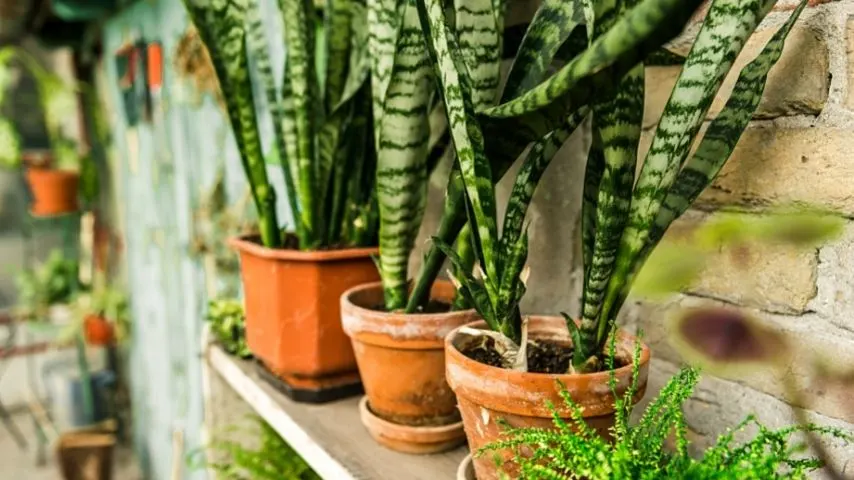
Most of the Sanseveria plants thrive in bright sunlight, but this genus has a variety of cultivars that respond well to low-lighting conditions.
You can easily find this flowering plant quiet easily and set it up around the offices to add some vibrancy to the space.
Its binomial nomenclature and basic plant care requirements include:
- Scientific Name: dracaena trifasciata
- Family: Asparagus Family
- Temperature: 55 to 85ᵒ F (12.77-to-29.44 degrees Celsius)
- Fertilizer: reduced all-purpose fertilizer
- pH: 4.5 to 8.5
- Soil: free-draining soil mix
- Lighting: low indoor lighting
- Growth rate: moderate growth rate
- Humidity: 40-60% humidity is recommended
13. Sempervivum
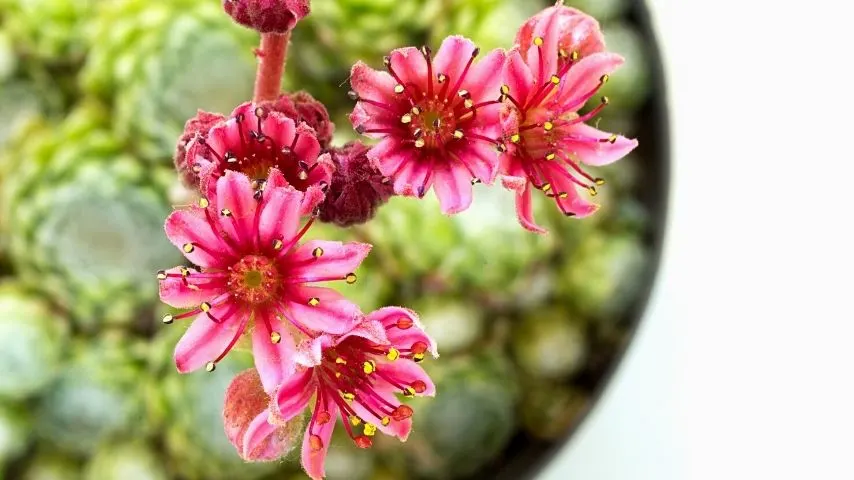
Sempervivum are low light succulents with interesting shapes and a fading green hue. While these plants would love the bright sun, they can thrive just as well with low lights.
The catch? their vibrant color fades away into a basic green.
Its binomial nomenclature and basic plant care requirements include:
- Scientific Name: supervivum
- Family: stonecrops
- Temperature: 65 to 75ᵒ F (18-to-24 degrees Celsius)
- Fertilizer: control release fertilizer
- pH: 5 to 6
- Soil: well-draining, perlite, sand, gravel, and pumice soil
- Lighting: low indoor lighting
- Growth rate: extremely slow
- Humidity: 40-60% humidity is recommended
14. Spider Plant
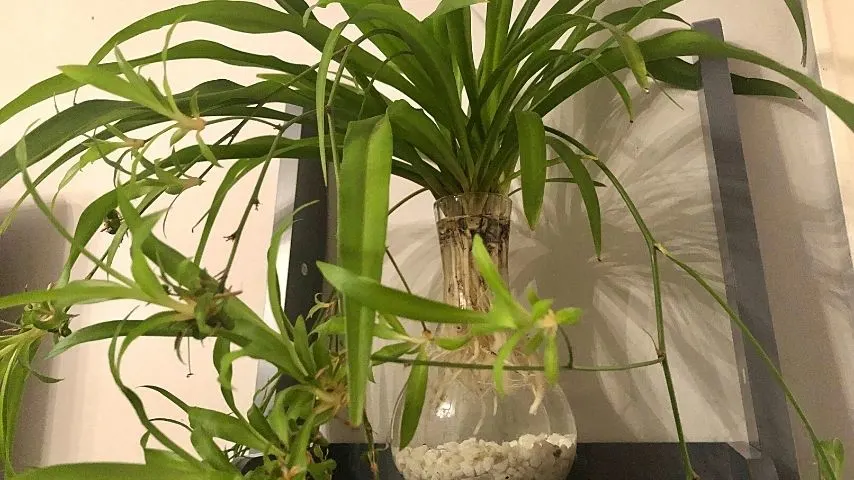
This is a multi-shaded plant with a gorgeous mild green in the middle and deep color on the outer corners. The best thing about the spider plant is that it is low maintenance and can grow in low-light spaces.
Its binomial nomenclature and basic plant care requirements include:
- Scientific Name: Chlorophytum comosum
- Family: Asparagus Family
- Temperature: 70 to 90ᵒ F (12.77-to-29.44 degrees Celsius)
- Fertilizer: reduced all-purpose fertilizer
- pH: 6.1 to 6.5
- Soil: water-soluble or granular release
- Lighting: low indoor lighting
- Growth rate: moderate growth rate
- Humidity: 40-60% humidity is recommended
15. ZZ Plant
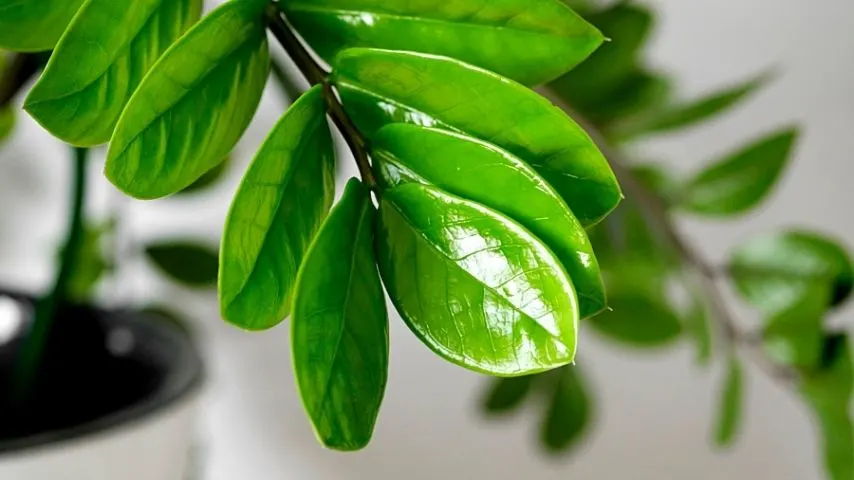
This unique plant is the perfect addition to any room that doesn’t receive enough natural light. Use medium-sized pots for this deep green foliage and place them on the floor instead of tables or desks.
The stems of a ZZ plant are rather sturdy. Therefore, they must be potted correctly to prevent them from toppling over.
Its binomial nomenclature and basic plant care requirements include:
- Scientific Name: zamioculcas
- Family: Arums
- Temperature: 60 to 75ᵒ F (15.55-to-23.88 degrees Celsius)
- Fertilizer: diluted half-strength house plant fertilizer
- pH: 6 to 7
- Soil: coarse sand, potting mix, and perlite
- Lighting: prefers indirect light but adapts to darker areas too
- Growth rate: slow growth rate
- Humidity: 40-50% humidity is recommended
16. Peace Lily
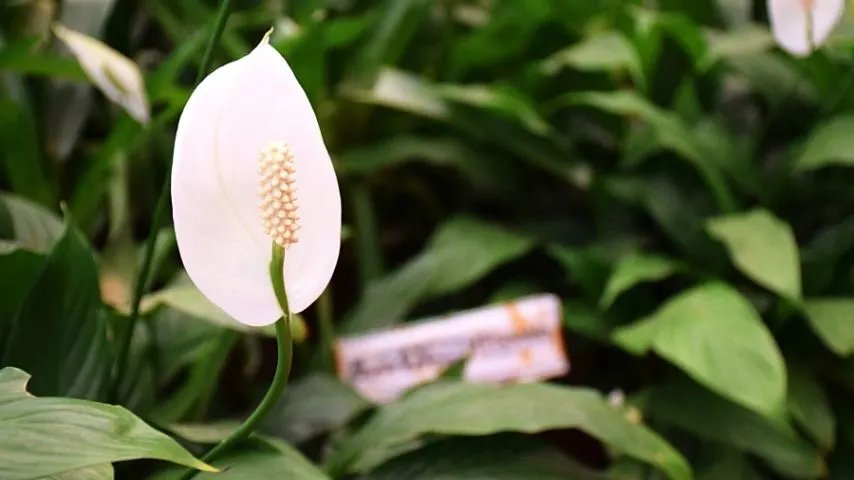
A peace lily in bloom is the most beautiful sight ever. The good news is you don’t need a bright room with tons of sunlight to grow this indoors.
This adaptable plant will make a great addition to your windowless office.
Its binomial nomenclature and basic plant care requirements include:
- Scientific Name: Spathiphyllum
- Family: Arums
- Temperature: 68 to 85ᵒ F (20-to-29.44 degrees Celsius)
- Fertilizer: house plant fertilizer (water-soluble)
- pH: 5.8 to 6.5
- Soil: moist, well-drained soil
- Lighting: low indoor lighting
- Growth rate: slow growth rate (3-5 years)
- Humidity: 50-60%+ humidity is recommended
17. Peacock Plant
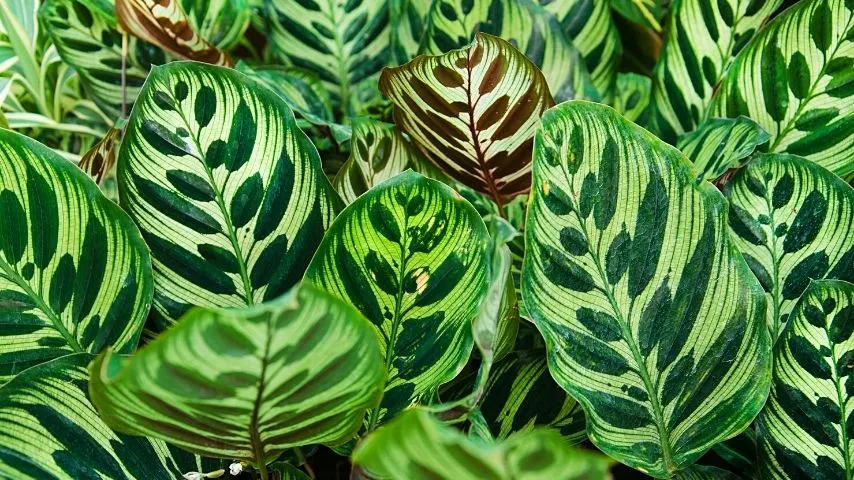
Purple hues, dark green outlines, and a pale green trimming- this is one stunning addition to any dull, windowless space.
This is a diverse plant, and you can choose to hang the pot or place it on the corner of the desk.
Its binomial nomenclature and basic plant care requirements include:
- Scientific Name: Calathea Makoyana
- Family: Arrowroots
- Temperature: 60 to 75ᵒ F (16-to-24 degrees Celsius)
- Fertilizer: half-strength water-soluble fertilizer
- pH: 6.5
- Soil: house potting mix (free draining)
- Lighting: low indoor lighting (no direct sunlight)
- Growth rate: moderate growth rate
- Humidity: 40-60% humidity is recommended
18. Peperomia
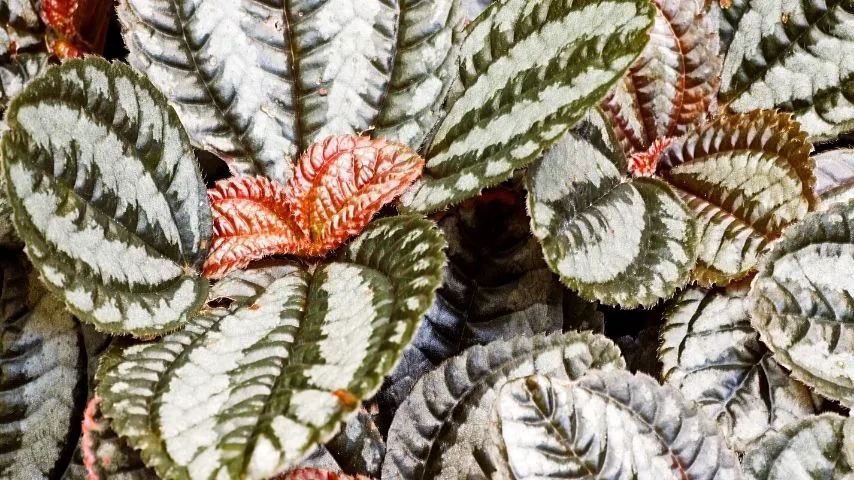
Peperomia plants are adaptable and can grow in varying conditions. The foliage also has numerous varieties you can choose from.
As these are low-light and low-maintenance plants, you can place them around a windowless office.
Its binomial nomenclature and basic plant care requirements include:
- Scientific Name: Peperomia
- Family: Piperaceae
- Temperature: 55 to 80ᵒ F (12.77-to-26.66 degrees Celsius)
- Fertilizer: iron, potassium, and nitrogen-rich fertilizer
- pH: 5.5 to 7
- Soil: well-drained
- Lighting: low indoor lighting
- Growth rate: fast-moderate growth rate
- Humidity: 40-50% humidity is recommended
19. Boston Fern
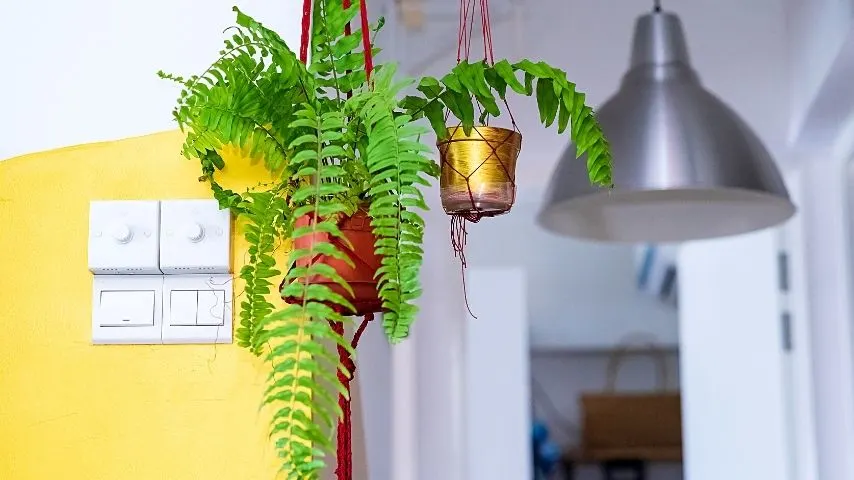
This frilly fern can be placed near doorways but out of direct sunlight. For offices with no windows, this can add a fresh dimension to this otherwise dull place.
Also, this doesn’t need extreme care, so it’s great for an office environment where a janitorial crew will take care of it.
Its binomial nomenclature and basic plant care requirements include:
- Scientific Name: Nephrolepis Exaltata
- Family: Nephrolepidaceae
- Temperature: 65 to 95ᵒ F (18.33-to-35 degrees Celsius)
- Fertilizer: reduced all-purpose fertilizer
- pH: 5 to 5.5
- Soil: loamy and light (airy soil)
- Lighting: indoor lighting
- Growth rate: moderate growth rate
- Humidity: 40-60% humidity is recommended
20. Prayer Plant
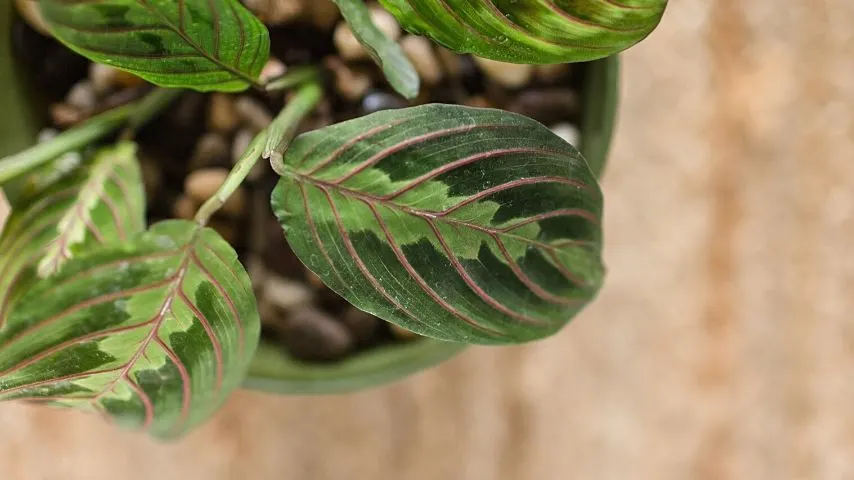
If you have ever seen a healthy prayer plant, you know why this is the perfect addition to your plant library. This gorgeous, multi-toned leaf plant spreads and grows well in indirect light or low light conditions.
Its binomial nomenclature and basic plant care requirements include:
- Scientific Name: Maranta leuconeura
- Family: Marantaceae
- Temperature: 60 to 80ᵒ F (15.55-to-26.66 degrees Celsius)
- Fertilizer: a well-draining potting mix
- pH: 5.5 to 6.5
- Soil: free-draining soil mix
- Lighting: low indoor lighting
- Growth rate: moderate growth rate
- Humidity: 50-80% humidity is recommended
21. Dumb Canes

This living décor looks like an artificial plant. The leave sizes and patterns are ideal for a formal space.
This plant thrives in low-light conditions, given that you avoid watering, which is a common concern.
Its binomial nomenclature and basic plant care requirements include:
- Scientific Name: dieffenbachia
- Family: Araceae
- Temperature: 65 to 75ᵒ F (18.33-to-23.88 degrees Celsius)
- Fertilizer: complete food is necessary for this plant
- pH: 6.1 to 6.5
- Soil: well-drained soil
- Lighting: keep away from bright sunlight
- Growth rate: fast growth rate
- Humidity: 50-60% humidity is recommended
22. Bird’s Nest Fern
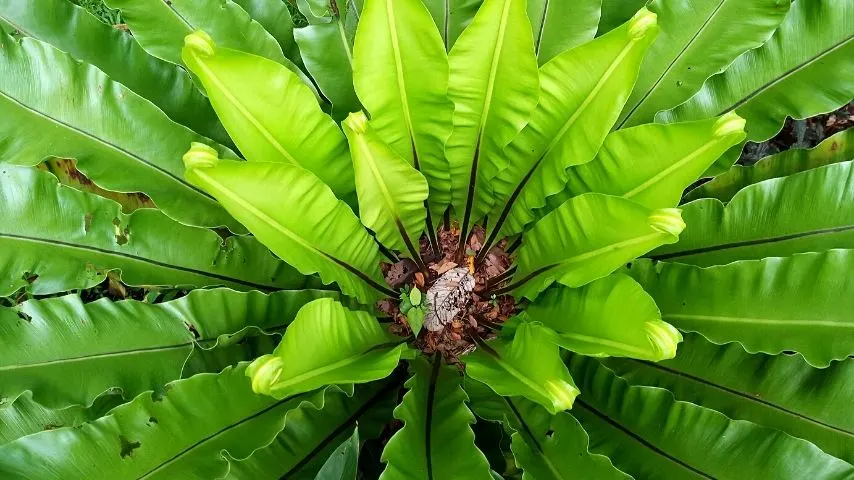
This leafy plant generally grows on other plants in its natural habitat. However, when growing it indoors as a house plant, it is best to keep it near a moist, highly humidified place.
Once potted, don’t move this plant or repot it unless it has grown significantly.
Its binomial nomenclature and basic plant care requirements include:
- Scientific Name: Asplenium Nidus
- Family: Aspleniaceae
- Temperature: 70 to 90ᵒ F (21.11-to-32.22 degrees Celsius)
- Fertilizer: half-strength liquid fertilizer
- pH: 5 to 5.5
- Soil: well-draining porous potting soil
- Lighting: indoor lighting
- Growth rate: moderate growth rate
- Humidity: 30-50% humidity is recommended
23. Lady’s Palm
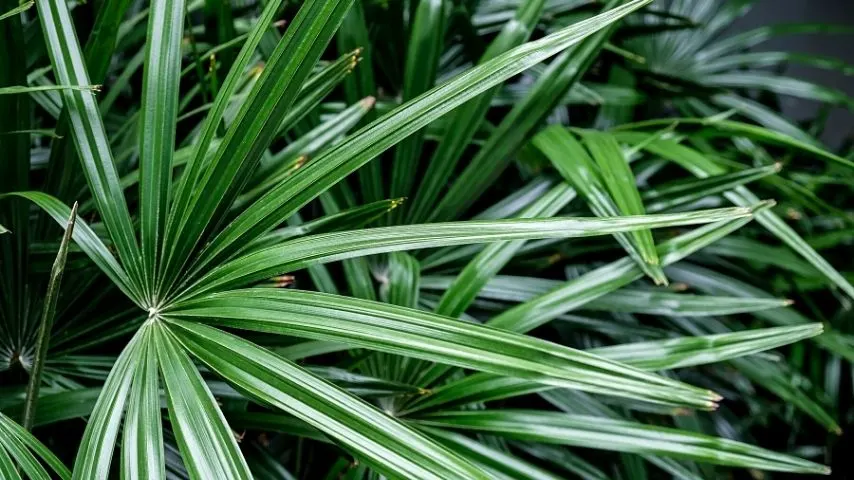
This is a beautiful indoor plant that adds quality texture to any interior. It grows in dense clusters and can demand attention with its strong stems and broad leaves.
There is a variety of lady’s palm options you can choose from.
Its binomial nomenclature and basic plant care requirements include:
- Scientific Name: Rhapis excelsa
- Family: Arecales
- Temperature: 60 to 80ᵒ F (15.55-to-26.66 degrees Celsius)
- Fertilizer: half-strength liquid fertilizer for house plants
- pH: 5.5 to 7
- Soil: well-draining loamy soil
- Lighting: indoor lighting
- Growth rate: moderate growth rate
- Humidity: 50-60% humidity is recommended
24. Air Plant
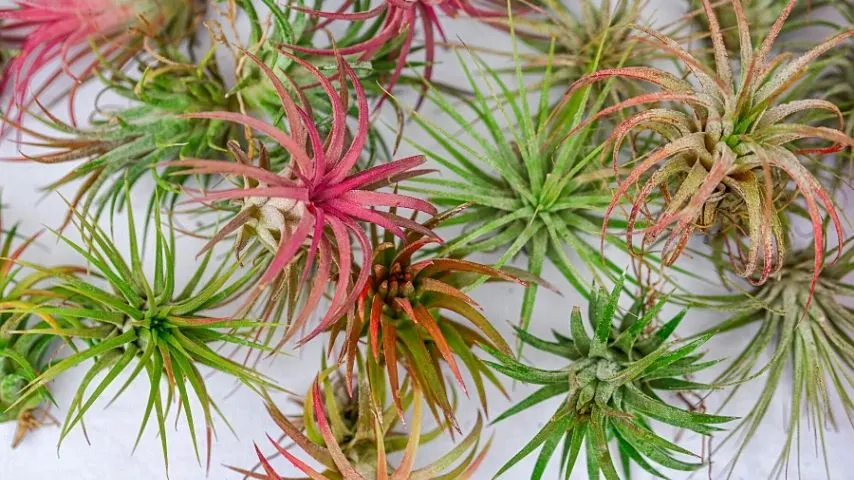
These are epiphytes meaning they prefer to grow on other plants.
However, you can just as easily place some in a bowl on your conference room table and let people gawk at how other-worldly they appear.
Its binomial nomenclature and basic plant care requirements include:
- Scientific Name: Tillandsia
- Family: Bromeliaceae
- Temperature: 50 to 90ᵒ F (10-to-32.22 degrees Celsius)
- Fertilizer: low nitrogen
- pH: 5.5 to 6
- Soil: no soil is needed
- Lighting: indirect/indoor light
- Growth rate: slow growth rate
- Humidity: 65-70% humidity is recommended
25. English Ivy
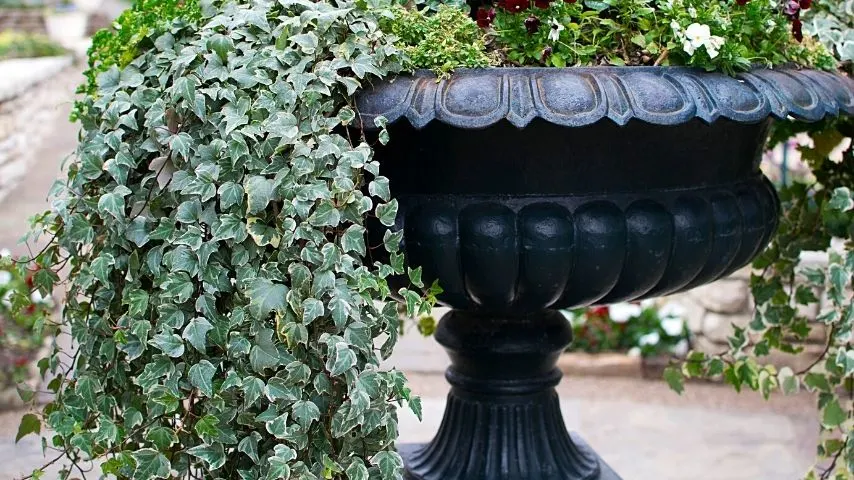
This is an adaptable climbing plant that can be grown as a hanging plant, a base plant near other potted plants, or on its own. Its vine-like structure makes it ideal for offices.
You can train it to grow along certain space areas to add some life to a dull interior.
Its binomial nomenclature and basic plant care requirements include:
- Scientific Name: Hedera Helix
- Family: Araliaceae
- Temperature: 70 to 90ᵒ F (21.11 to 32.22 degrees Celsius)
- Fertilizer: reduced all-purpose fertilizer
- pH: 6.5 to 7
- Soil: loamy and well-draining
- Lighting: indirect/indoor lighting
- Growth rate: moderate growth rate
- Humidity: 40-60% humidity is recommended
26. Monstera
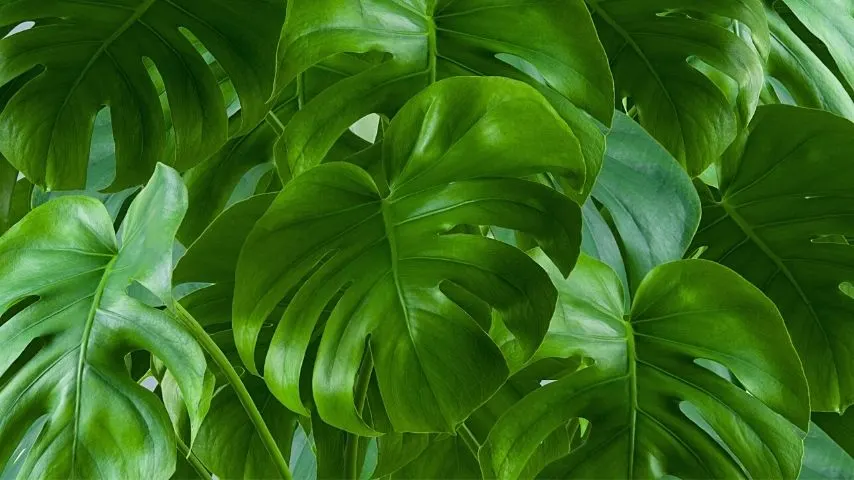
The patterned foliage and size of this plant are quite attractive. It is an indoor plant that does well in low-light places such as windowless rooms.
Add this to your office space to help filter and improve air quality.
Its binomial nomenclature and basic plant care requirements include:
- Scientific Name: Monstera deliciosa
- Family: Araceae
- Temperature: 60 to 80ᵒ F (15.55to26.66 degrees Celsius)
- Fertilizer: nitrogen, phosphorus, and potassium-rich fertilizer
- pH: 5 to 5.7
- Soil: peat, perlite, and pine bark fines
- Lighting: low indoor/indirect lighting
- Growth rate: moderate growth rate
- Humidity: 65-90% humidity is recommended
27. Maidenhair Fern

This fern species isn’t just pretty to look at but also low maintenance. It is extremely sturdy and grows well in almost all environment types.
Maidenhair Fern is an ideal plant for an office that does not see much light. Just make sure the soil is evenly moist, and you are good.
Its binomial nomenclature and basic plant care requirements include:
- Scientific Name: adiantum
- Family: Adiantaceae
- Temperature: 60 to 70ᵒ F (16to21 degrees Celsius)
- Fertilizer: not necessary
- pH: 6 to 7
- Soil: evenly moist and well-draining
- Lighting: indoor lighting
- Growth rate: slow growth rate
- Humidity: 50-60% humidity is recommended
28. Pothos
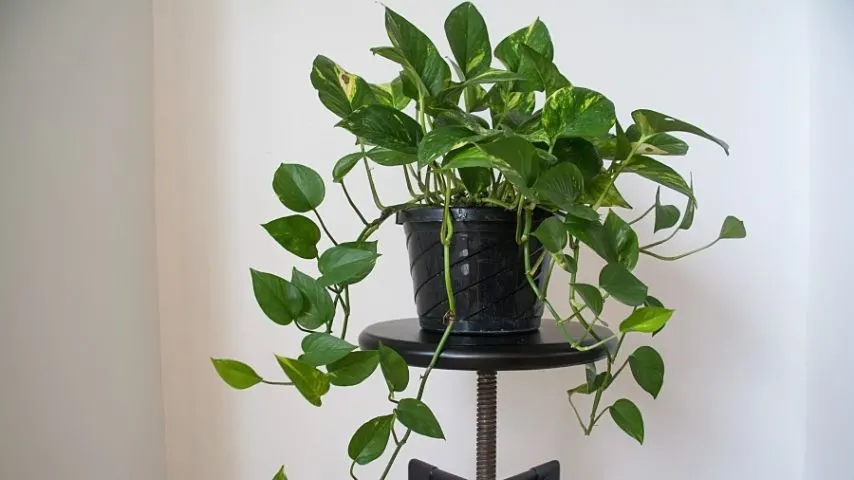
Pothos or devils’ ivy is a vine-like plant that works well under low-light conditions. They can also be grown in water vases on their own.
Its binomial nomenclature and basic plant care requirements include:
- Scientific Name: Epipremnum aureum
- Family: Arum
- Temperature: 70 to 90ᵒ F (21.11to32.22 degrees Celsius)
- Fertilizer: reduced all-purpose fertilizer
- pH: 4.5 to 8.5
- Soil: a well-balanced house plant fertilizer will do
- Lighting: indoor lighting
- Growth rate: fast
- Humidity: 50-70% humidity is recommended
29. Aloe Vera
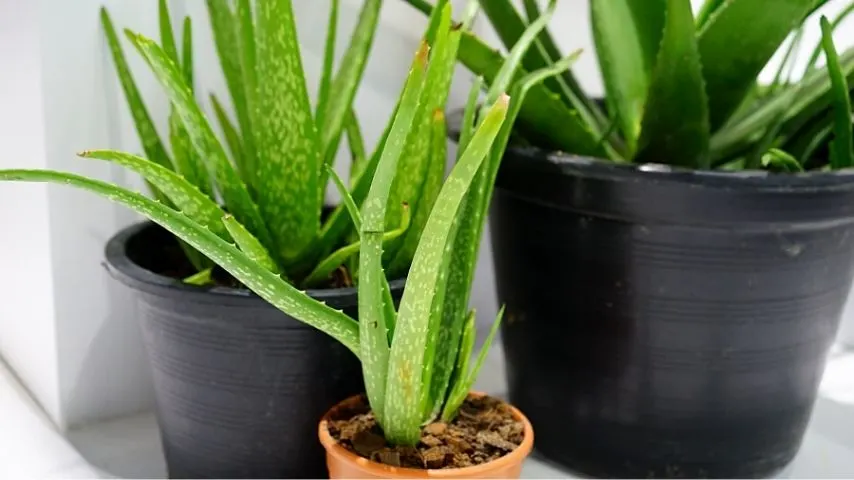
Aloe vera is a succulent that grows well in indoor conditions. This is the plant if you want to add some texture to the décor and have a sunburn gel handy.
Its binomial nomenclature and basic plant care requirements include:
- Scientific Name: Aloe barbadensis Miller
- Family: Asphodelaceae
- Temperature: 55 to 80ᵒ F (12.77to26.66 degrees Celsius)
- Fertilizer: liquid house plant mix
- pH: 7 to 8.5
- Soil: well-draining potting mix
- Lighting: low indoor lighting
- Growth rate: moderate growth rate
- Humidity: 45-85% humidity is recommended
30. Scindapsus Pictus
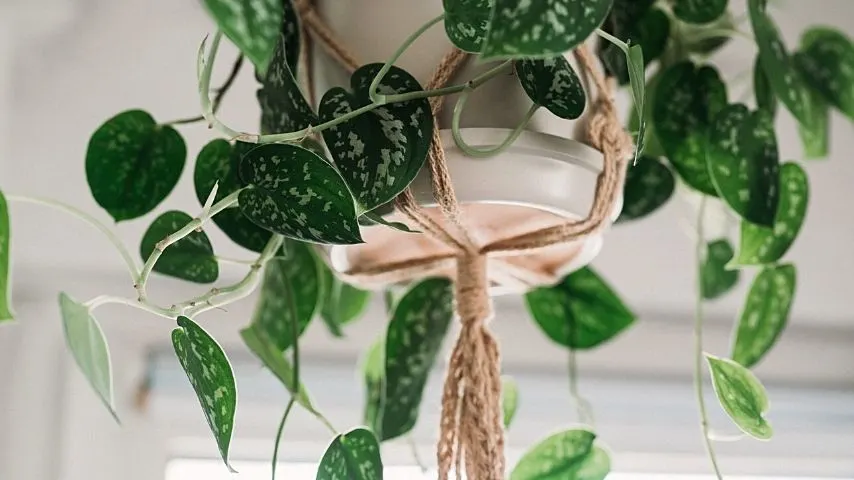
Also known as the silver vine, this is a low-maintenance indoor plant that does not need much light to thrive. This evergreen climber can be added to smaller pots and kept around the office.
Its plant care requirements are the following:
- Scientific Name: Scindapsus Pictus
- Family: Araceae
- Temperature: 65 to 8ᵒ F (18to29 degrees Celsius)
- Fertilizer: half-strength diluted fertilizer
- pH: 6.1 to 6.5
- Soil: potting mix
- Lighting: indoor lighting
- Growth rate: moderate growth rate
- Humidity: 30-40% humidity is recommended
An office without windows doesn’t mean you cannot have indoor plants. I hope these 30 Best Plants for offices with no windows help you choose your favorites.

Daniel has been a plant enthusiast for over 20 years. He owns hundreds of houseplants and prepares for the chili growing seasons yearly with great anticipation. His favorite plants are plant species in the Araceae family, such as Monstera, Philodendron, and Anthurium. He also loves gardening and is growing hot peppers, tomatoes, and many more vegetables.

